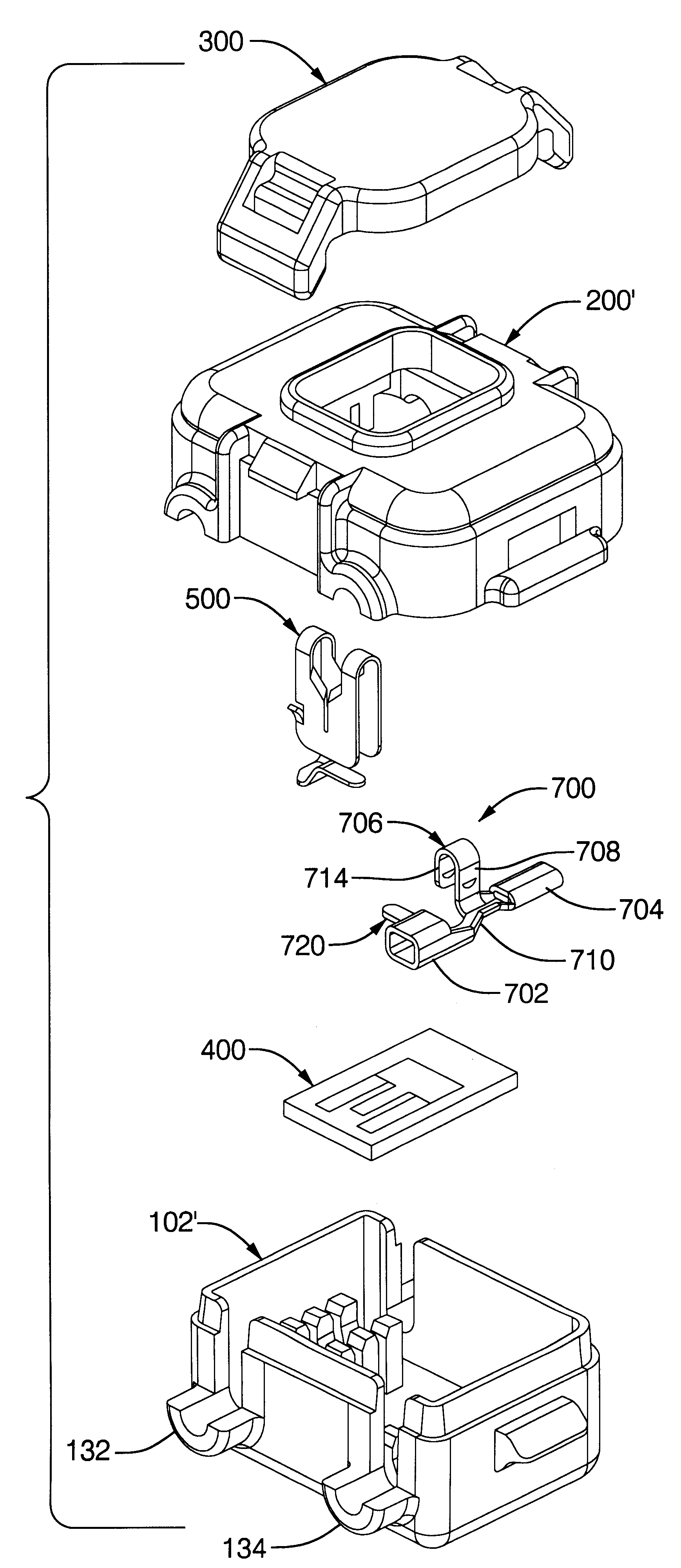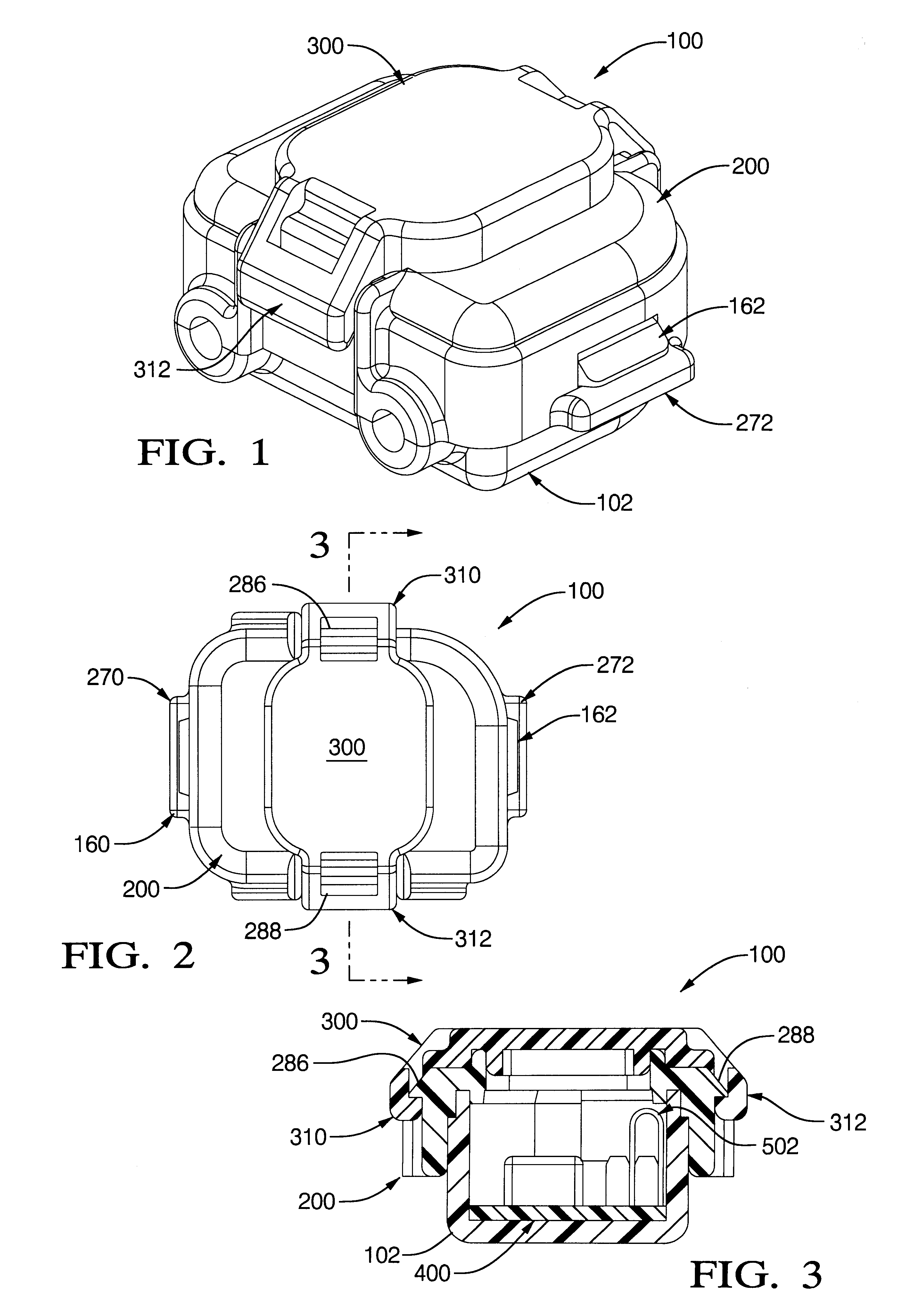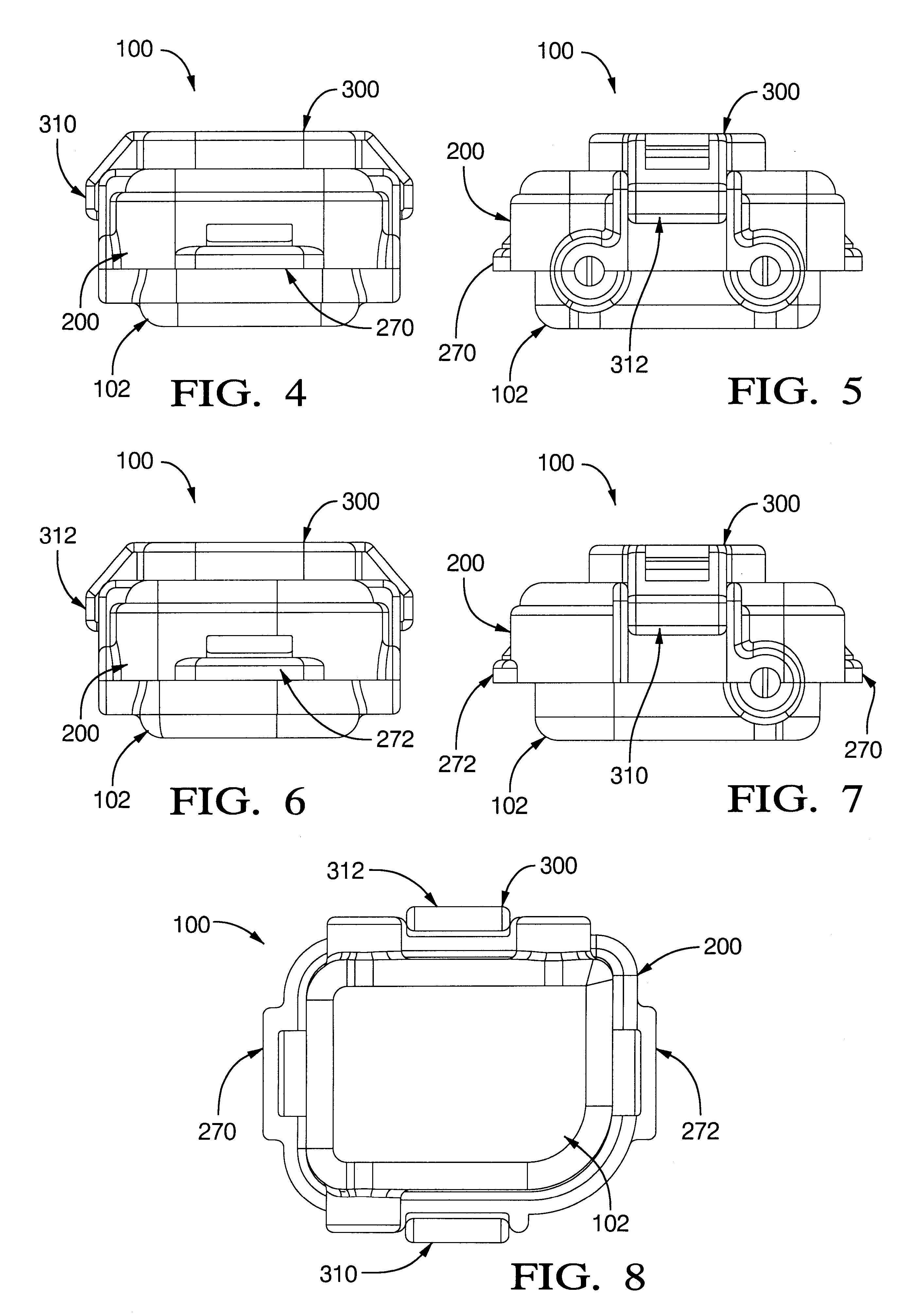Trim resistor connector and sensor system
a technology of resistor connector and trim resistor, which is applied in the direction of contact member penetrating/cutting insulation/cable strand, coupling device connection, instruments, etc., can solve the problems of mold tooling cost, limited flexibility and adaptability of current practice,
- Summary
- Abstract
- Description
- Claims
- Application Information
AI Technical Summary
Benefits of technology
Problems solved by technology
Method used
Image
Examples
first embodiment
Referring in more detail to the accompanying drawings, the connector assembly of the invention is shown assembled in FIGS. 1 through 8 and in exploded perspective in FIG. 9 and is made up of the following six principal components:
(1) A housing base herein termed the "connector" 102;
(2) A cover 200;
(3) A cap 300;
(4) A conventional trim resistor substrate 400;
(5) A first insulation displacement connector (IDC) terminal 500; and
(6) A second IDC terminal 502.
The housing base part, i.e., connector 102, is shown by itself in FIGS. 12 through 21, these views being to engineering scale and incorporated herein by reference to facilitate making and using the first embodiment of the invention. Connector 102 is preferably an injection molded part made of suitable plastic material having good electrical insulation and heat and moisture resistance properties. It will also be seen from these views that connector 102 has generally an open top cup shape as defined by a bottom wall 120 basically of r...
second embodiment
In the second embodiment connector assembly 600, the connector end of output lead LW.sub.2 (not shown in FIGS. 52-66) is provided with a special crimp-type terminal 700 shown in exploded perspective in FIG. 52, by itself in FIGS. 53-58 and in assembly with a modified connector 102' of connector assembly 500 in FIGS. 59 and 60. Connector 700 is generally of the crimp-on type made by progressive die-stamping and bending for clasping the end of an insulated lead wire having the metallic conductor core stripped of insulation for a short distance at its free end. Preferably the lead wire is inserted bare-wire-end first through the larger diameter tunnel 702 formed at one end of terminal 700 until the bared core free end is received within a narrower diameter tunnel 704 at the opposite axial end of terminal 700. Tunnel 702 is the mechanically crimped to squash onto and grip the insulated portion of the lead wire, and likewise the smaller tunnel 704 is mechanically crimped to squash onto a...
PUM
| Property | Measurement | Unit |
|---|---|---|
| angles | aaaaa | aaaaa |
| resistive conductive | aaaaa | aaaaa |
| resistance | aaaaa | aaaaa |
Abstract
Description
Claims
Application Information
 Login to View More
Login to View More - R&D
- Intellectual Property
- Life Sciences
- Materials
- Tech Scout
- Unparalleled Data Quality
- Higher Quality Content
- 60% Fewer Hallucinations
Browse by: Latest US Patents, China's latest patents, Technical Efficacy Thesaurus, Application Domain, Technology Topic, Popular Technical Reports.
© 2025 PatSnap. All rights reserved.Legal|Privacy policy|Modern Slavery Act Transparency Statement|Sitemap|About US| Contact US: help@patsnap.com



